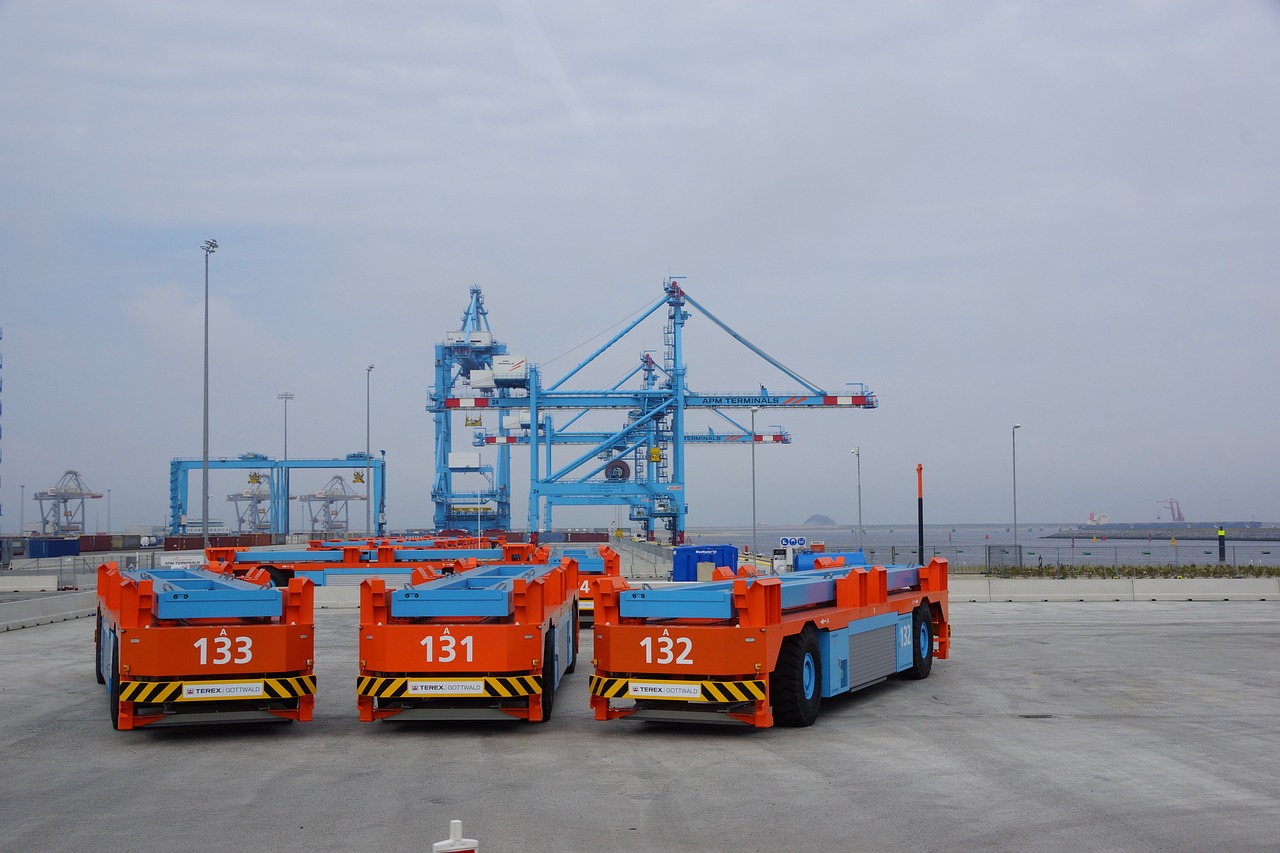Beginning
In the ever-changing field of industrial automation, breakthrough technologies like AGVs, or automatic guided vehicles, are growing as fundamental solutions, creating a new era in the difficult dancing of materials moving throughout manufacturing plants, warehouses, and distribution centers.
AGVs, commonly referred to as intelligent marvels, seamlessly integrate cutting-edge technologies to autonomously navigate and transport items, providing a finely tuned combination of efficiency, accuracy, and flexibility.
AGVs differentiate themselves by their capacity to operate automatically. They are outfitted with powerful sensors, artificial intelligence, and navigation systems, allowing them to travel planned paths while avoiding obstacles and dynamically adapting to real-time changes in their surroundings.
1. What is an ( AGVs ) automated guided vehicle?
An Automated Guided Vehicle (AGV) is an independent robotic transport system designed to move items automatically in a controlled environment.
AGVs use many kinds of navigation technologies, sensors, and control systems to follow specified courses and complete activities like material handling, transportation, and even simple assembly processes.
For more information, see here.

2. Key Features of AGVs
1. Advanced Navigation Technology:
Autonomous vehicles (AGVs) use optical instructions, magnetic tape, vision systems, or natural feature recognition to accurately navigate their surroundings.
2. Accident Avoidance Systems:
Autonomous ground vehicles (AGVs) use sensors and algorithms to identify objects and adjust their path to prevent collisions.
3. Flexible Configurations:
AGVs can be configured as load vehicles, cranes, or robotic arms to meet varying material handling requirements.
4. Integration with Warehouse Management Systems (WMS)
AGVs interface smoothly with WMS, enabling real-time interaction and collaboration. This combination improves the movement of materials, minimizes mistakes, and increases overall operational efficiency.
5. Battery Technology:
Advanced battery technology powers AGVs, providing longer operational durations with minimal downtime for recharging.
6. Remote Monitoring and Control:
AGVs typically have remote monitoring and control capabilities, allowing operators to observe and operate the vehicle from a central location.
3. Applications of AGVs
1. Material Handling in Manufacturing:
AGVs specialize in transporting raw materials, work-in-progress, and finished goods throughout production facilities.
2. Warehouse Logistics:
Automated guided vehicles (AGVs) improve storage efficiency and order fulfillment by simplifying cargo transportation.
3. Automated Packaging and Depalletizing:
Using AGVs with embedded robotic arms reduces manual work and improves efficiency.
4. Medical Industry:
Autonomous ground vehicles (AGVs) help move medical equipment, supplies, and drugs safely and accurately.
5. Automotive Assembly:
AGVs automate the transportation of materials in automotive manufacturing processes, leading to increased efficiency and lower production costs.
6. Aerospace Manufacturing:
Automated guided vehicles (AGV’s) move components and materials to workplaces, promising a smooth and controlled manufacturing process.

4. pros and cons of AGVs
Pros of AGV’s:
1. Increased Efficiency: AGV’s improve material flow, reduce delivery times, and boost entire efficiency in operation.
2. Cost Savings: Automation with AGV’s reduces manpower costs and improves resource usage.
3. Enhanced Safety: Autonomous ground vehicles (AGV’s) have advanced safety measures to reduce workplace accidents and injuries.
4. Flexibility and Scalability: AGV’s are adaptable to changing operational needs and may be expanded to meet increasing demand.
5. Error Reduction: Automated guided vehicles (AGV’s) are more accurate than manual material handling, minimizing the risk of errors.
6. AGVs can run 24/7: enabling continuous production and reducing downtime.
7. Improved Space usage: Autonomous ground vehicles (AGV’s) maximize facility space usage through effective navigation.
Cons of AGVs:
1. High Initial Investment: The initial cost of using AGV systems can be major impacting the initial investment required.
2. Complex Implementation: Integrating AGV’s into present operations requires careful planning and coordination.
3. Infrastructure Requirements: Autonomous vehicles (AGV’s) depend on certain infrastructure pieces like magnetic tape or markers, which limits their adaptability in certain environments.
4. Limited capacity Capacity: Although AGV’s can handle a variety of weights, their maximum capacity is limited.
5. Maintenance Costs: AGVs require regular maintenance, which can add up over time.
6. Lack of Human Flexibility: Autonomous vehicles may struggle with jobs that need adaptability and problem-solving skills from human operators.
7. Technology Limitations: Although modern, AGV technology may have limitations in particular situations, like outdoor locations with unexpected ground.
5. Future Prospects of AGVs:
1. Technological Advances: Further developments in artificial intelligence, machine learning, and navigation technologies will improve AGV performance.
2. Battery Technology: Advancements in energy storage will increase operational hours and reduce maintenance for AGV’s.
3. Collaboration with Other Technologies: increased compatibility with robotic arms, drones, and other automation tools will expand AGV applications.
4. Adaptability and Flexibility: AGV’s are predicted to become more flexible and adaptable, addressing a wide range of operational requirements.
5. Operational Efficiency: By integrating cutting-edge technologies, handling of materials operations will become more efficient and productive.
6. Interconnected Industrial Landscape: AGV’s will play an important part in manufacturing’s interconnected future, helping to create an effortless and smart industrial ecosystem.
Conclusion
In conclusion, Automated Guided Vehicles (AGV’s) are transforming the automation of industries by improving the handling of materials procedures and increasing efficiency in operations.
With initial investment problems and limits, many advantages, such as improved security, cost savings, and 24-hour operation, highlight AGV’s importance.
As technology advances, AGV’s are going to keep improving with improvements in navigation, artificial intelligence, and integration with other automation systems.
The future promises even greater adaptability and adaptability, solidifying AGVs’ status as crucial assets in today’s changing manufacturing and supply chain environments.
Related blog entries
1. Advantages and disadvantages of humanoid robots
2. Why are robots better at doing repetitive tasks than humans?
3. Where are articulated robots used the most?
5. what is Artificial Intelligence and Data Science






2 thoughts on “What is an ( AGVs) automated guided vehicle?”